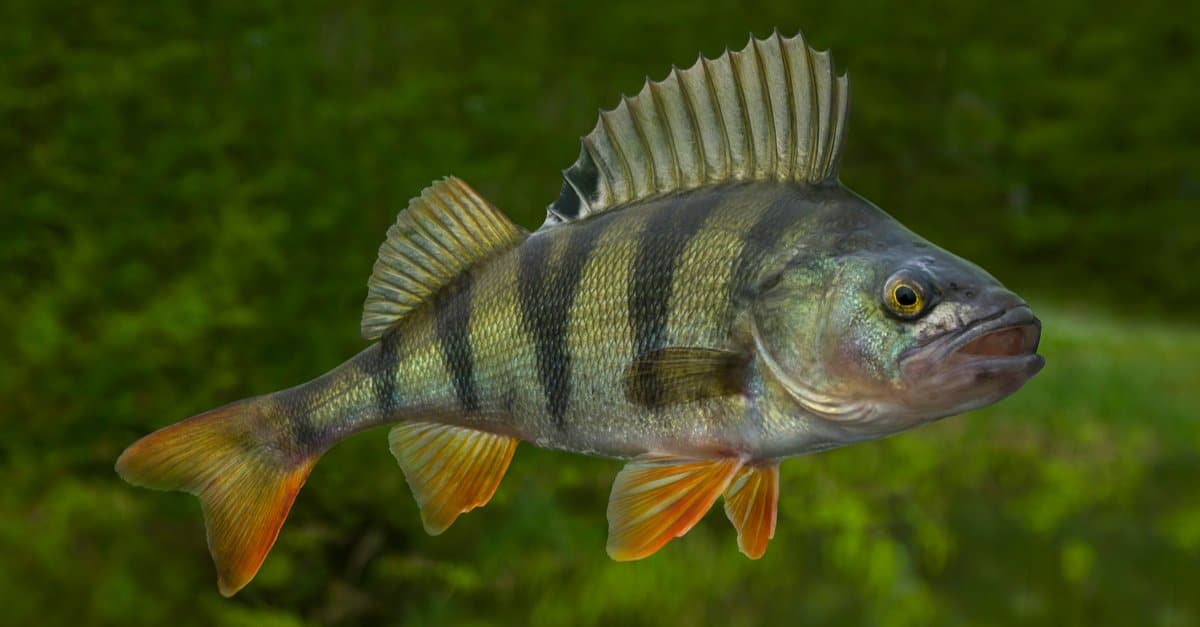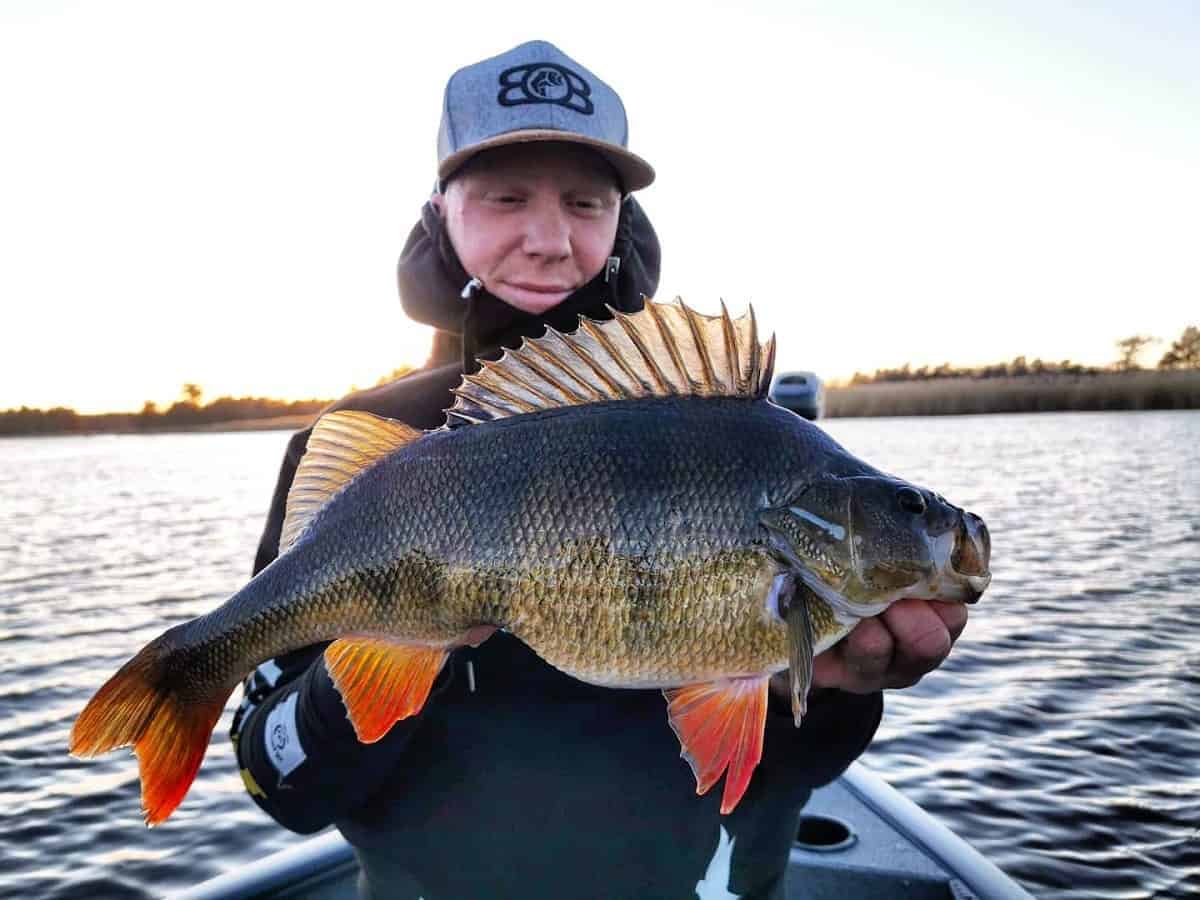Perch Definition

Perch is a type of fish that belongs to the order Perciformes, the family Percidae, and the genus Perca. It is a freshwater fish that is native to Europe and Asia. Perch are typically small to medium-sized fish, with a length of 15 to 30 centimeters. They have a slender body with a long dorsal fin and a forked tail fin. Perch are typically green or brown in color, with dark vertical stripes on their sides.
Biological Classification
Perch belong to the order Perciformes, which is the largest order of fish, containing over 10,000 species. The order Perciformes is divided into several families, including the Percidae family, to which perch belong. The Percidae family includes about 200 species of fish, all of which are freshwater fish. Perch belong to the genus Perca, which includes about 10 species of fish. The most common species of perch is the European perch (Perca fluviatilis).
Physical Characteristics
Perch are typically small to medium-sized fish, with a length of 15 to 30 centimeters. They have a slender body with a long dorsal fin and a forked tail fin. Perch are typically green or brown in color, with dark vertical stripes on their sides. The coloration of perch can vary depending on their habitat. Perch that live in clear water are typically lighter in color than perch that live in dark water.
Adaptations
Perch have several adaptations that enable them to thrive in their aquatic environments. These adaptations include:
- A swim bladder: Perch have a swim bladder that allows them to control their buoyancy. This adaptation allows perch to stay at a specific depth in the water column without having to swim constantly.
- Sharp teeth: Perch have sharp teeth that they use to eat small fish, insects, and other aquatic creatures.
- A lateral line: Perch have a lateral line that runs along their body. This adaptation allows perch to detect changes in water pressure, which helps them to find prey and avoid predators.
Perch Habitat and Distribution
Perch definition – Perch, belonging to the Percidae family, are a widely distributed group of fish found in various aquatic ecosystems. Understanding their habitat preferences and the factors influencing their distribution is crucial for effective conservation and management strategies.
Habitat Characteristics
Perch typically inhabit freshwater environments, including lakes, rivers, and estuaries. They prefer areas with clear water, ample vegetation, and structures like rocks or logs that provide shelter and feeding grounds.
Distribution Influencers
The distribution of perch populations is influenced by several environmental factors:
- Water Temperature: Perch are cold-water fish, thriving in temperatures ranging from 50°F to 70°F (10°C to 21°C). Extreme temperatures can limit their distribution and survival.
- Oxygen Levels: Perch require well-oxygenated water for respiration. Low oxygen levels, often caused by pollution or eutrophication, can restrict their habitat availability.
- Prey Availability: Perch are opportunistic feeders, consuming a variety of insects, crustaceans, and small fish. Their distribution is influenced by the abundance and accessibility of prey.
Conservation Challenges
Perch habitats face numerous conservation challenges, including:
- Habitat Degradation: Pollution, deforestation, and urbanization can degrade water quality and destroy essential habitats for perch.
- Overfishing: Unsustainable fishing practices can deplete perch populations, affecting their distribution and ecosystem balance.
- Climate Change: Rising water temperatures and changes in precipitation patterns can alter perch habitats and impact their survival.
Preserving perch habitats requires collaborative efforts to reduce pollution, promote sustainable fishing practices, and implement conservation measures that protect and restore their aquatic ecosystems.
Perch Behavior and Feeding Habits: Perch Definition

Perch, known for their abundance in various aquatic ecosystems, exhibit fascinating behaviors and feeding habits that shape their ecological roles. They form intricate social structures, display territorial instincts, and employ diverse hunting techniques to thrive in their watery domains.
Social Behavior
Perch are highly social creatures that often congregate in large schools, offering protection from predators and enhancing foraging efficiency. Within these schools, individuals maintain a hierarchical order, with dominant fish establishing and defending territories. Territoriality is crucial for perch, as it provides access to preferred feeding grounds and shelter.
Feeding Habits
Perch are opportunistic predators that feed on a wide range of prey, including smaller fish, invertebrates, and zooplankton. They are ambush predators, often lying in wait near cover before launching sudden attacks on unsuspecting victims. Perch possess sharp teeth and a muscular pharynx, which aid in capturing and consuming their prey.
Role in the Aquatic Food Chain, Perch definition
Perch occupy an important position in the aquatic food chain, serving as both predators and prey. As predators, they help control populations of smaller fish and invertebrates, maintaining ecosystem balance. Simultaneously, they serve as a food source for larger predators, such as pike and bass, contributing to the intricate web of predator-prey relationships within aquatic ecosystems.
Like a perch, a fish that hovers near the water’s surface, the basketball player executes a “floater” shot, a delicate touch that floats over the rim, evading defenders like a perch evades predators. The perch, a master of disguise, blends into its surroundings, while the floater shot, a master of deception, confounds opponents.
A perch, a place of rest for weary souls, finds its parallel in the realm of basketball, where it takes on a new meaning as the perch basketball term. Like the perch of nature, it offers a momentary respite, a strategic position from which players can survey the court and plan their next move.
And as the game unfolds, the perch remains a constant, a symbol of both tranquility and the relentless pursuit of victory.
A perch is a small, freshwater fish often found in shallow waters near vegetation. However, in the world of basketball, the term “lift” takes on a different meaning. Lift basketball meaning refers to a move where a player elevates their body to gain an advantage in a jump ball or rebound situation.
This technique requires strength, timing, and the ability to outmaneuver opponents. While the term “perch” may not be directly related to basketball, the concept of elevating oneself to achieve a desired outcome remains consistent.
Perch, a fish known for its spiny dorsal fin, reminds me of the agile movements of pike basketball players. Their swift strikes and soaring leaps mimic the predatory instincts of the perch, showcasing both finesse and athleticism. Returning to our aquatic subject, the perch’s distinctive appearance and behavior make it a fascinating creature in the realm of marine life.
Perch, a freshwater fish known for its spiny dorsal fin, is often hailed as a “poster fish” for its adaptability and resilience. Just like the poster fish , perch thrives in various habitats, symbolizing the strength and diversity found in the aquatic world.
However, beyond its role as a symbol, perch remains an important species in ecological studies, showcasing the delicate balance of freshwater ecosystems.